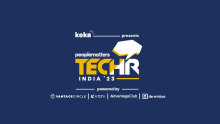Preparing resilient leaders to lead and thrive

Many organizations used the last year to make fundamental preparations for a changed context resulting from the COVID-19 pandemic by adopting a virtual, flexible work environment, bringing in automation, building a resilient supply chain, moving business online, and many more.
In most of these situations, the sense of urgency of the situation made leaders identify the specific problems to solve and solve them quickly. As one senior leader in a bank remarked, we managed to put in place a complex technology solution in flat four weeks which in the normal scheme of things would have taken us almost a year deliberating, data gathering, benchmarking. I asked, “so what made it different this time?” She said, “we knew given the situation, it was the right thing to do when we listened to the conviction of the teams serving the customer. We had limited knowledge of our competitor's response. We didn't know if it would work. So, we decided to start small, tested our solution, and scaled up by learning from our experience. As a leadership team, it was immensely satisfying to see this succeed”.
This approach to problem-solving is what operating organizations in a thriving mode will look like. The organization will be akin to a boat masterfully navigated through the crests and troughs of the choppy waters and yet moving decisively ahead towards its destination.
The organization will look very different.
The capability of the organization will be reflected by its preparedness to anticipate the conditions and their impact, being alert, with a culture that is purposeful and agile. Such an organization will have healthy relationships with all its stakeholders so that all are signed up to support in doing what is needed to keep it successful. This is the design of an organization built on the wisdom of teams rather than just depending on the individual brilliance of employees.
Leaders will take a different set of qualities to build and navigate such an organization in this thrive phase.
Purposeful and decisive
Leaders have clarity of the purpose of the organization and make effort to connect all that they and everyone in the organization do with this purpose and the values of the organization. They call out and question actions not aligned to these. Constantly coach other leaders as well as teams to be purposeful.
While they have clarity through the purpose, they also have a good sense of the situation on the ground. They connect frequently with colleagues directly having the experience and understanding of the situation. They look at data from reports and pay attention to the trends and the outliers. Finally decide, weighing the various considerations with the timeliness of response.
Build trustful relationships
Leaders build that trust through authentic conversations and transparent decisions. They also empower leaders and teams to meet the demands of the various stakeholders in an empathetic and timely manner.
Trust, when invested wisely across relationships with stakeholders, grows through repeated affirming experiences; when invested poorly, it rapidly depreciates. Further, research demonstrates that trust also yields results such as economic growth and shareholder value, increased innovation, greater community stability, and better health outcomes. Trust is also actionable, and human. For example, a trust may be built among employees when leaders thoughtfully consider when they go to great lengths to preserve as many jobs as possible rather than just preserving profits. Similarly, a trust may be built among customers when organizations add extra security measures to protect customer data from cyber threats.
Culture, culture, culture
Leaders painstakingly foster a culture where the following gets emphasis. They communicate actively. They guide and coach other leaders and teams on it. They reward and recognize behaviors that fit this.
- Purposefulness – connecting all actions to the purpose and values of the organization. When operating in an unclear environment the values and the purpose become a dependable compass to guide actions. One manufacturing organization, operating in multiple remote locations across the country, decided to permanently open part of their unused property into a healthcare center in partnership with local civic authorities with an intention to serve the communities there.
- Human centricity – We know organizations that focus on the human experience of their customers (CX), workforce (WX), and partners in their supply chain (PX) are more likely to outperform their peers in revenue growth over a time period. We also know that retaining customers, as well as employees, saves money: acquiring a new customer can cost significantly more than retaining an existing customer, and boosting customer retention rates can significantly increase profitability. Similarly, for retaining employees over hiring. Therefore, leaders become observant students of human behaviors, values, and needs, because those organizations that understand best what it means to be human, anticipating and meeting the deeply human needs as they change, will likely be the first to recover and thrive. In one study covering 3000 companies, 96% of them struggled to design and launch anything resembling human-centered experiences despite the CXOs in these organizations were unanimous about its importance.
- Experimentation and Innovation – The “half-life” of skills is steadily dropping. One study showed that a set of skills will lose relevance in a span of 3-4 years. It's a natural consequence of the rate of change in the environment in the last decade and now accelerated by the pandemic. Clearly, in order to thrive, the rate of learning and experimentation of organizations needs to be higher than the change outside. It is the role of the leader to instill the value of learning and create conditions that encourage employees at all levels to repurpose their existing capabilities and learn new ones. As one leader said, “my job today is not really to push our colleagues to attend training programs, like taking the horse to water. My job is to make the horse thirsty!”.
Manage self
Leaders recognize that the environment in which they operate is very demanding. They manage their own energies well. They focus on the well-being of their own mental and physical health. They know that they do not have all the answers. They exude humility and confidence in dealing with people and situations. They maintain a firm grip on reality, allow bad news to surface unjudged. They do not rely on MIS reports alone, they stay inactive in touch with the source of the data. They engage with the stakeholders and communicate with them extensively. They confront mindsets gently but firmly. This aspect becomes their dominant role since the organization, like an automaton, still responds to situations from past habits. For example, working long hours has always been seen as a virtue. Challenging this point of view in practice and guiding people to stay purposeful and value-driven around wellbeing is an important role of the leader.











